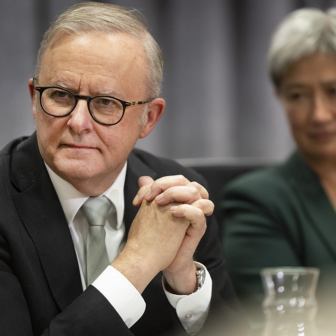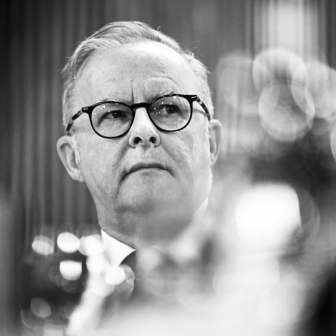ON WEDNESDAY night last week, just back from three weeks researching in Rome, I went to one of those college dinners that mark Oxbridge out as a place where academics cling to ancient privilege. Home in my bed, I stirred uneasily. No, it was not the claret, nor the sauterne, nor even the armagnac. My restlessness was rather prompted by the fact that I could no longer hear singing trams, as I had done for my previous twenty nights back in the Eternal City, “my city” of the mind.
Singing trams? Well, yes. On this, as on other occasions, I had stayed at the British School at Rome. It is housed in an imperially pillared Edwin Lutyens building across from the Borghese Gardens. It was erected in 1911 for Italy’s fiftieth anniversary celebration, that time of the opening of the grandiose Victor Emmanuel monument – “Typewriter,” “Wedding Cake” or “De Luxe Public Urinal” – recorded on the camera of every tourist to the city. In our neoliberal times, the British School, as an academy devoted to the humanities, struggles financially. Its first devotion to archaeology and the classics has sagely been widened to embrace art history, architecture, painting and sculpture, and even contemporary history. I have found shelter there for many years when on my forays into Roman archives and libraries. The “School” (its planners struggle with the unglamorous name, fearing that locals write it off as a downmarket language teaching institute rather than the Roman face of the British Academy) has broadened the definition of “British” to embrace quite a few people from the Commonwealth. They are especially likely these days to come from rich Australia, with its powerful currency making the whole world cheap and accessible. In 2013 residents included Australian scholars in many fields, as well as creative artists, amplified noisily by twenty-five or so undergraduates in ancient history from the University of Queensland who arrived on a flying one-week visit to tramp the Coliseum, Pantheon and Saint Peter’s with evident joy.
Singing trams? Well, the School sits above the Piazza Thorvaldsen, terminus of the number 3 tram that circles much of historic Rome. (Bertel Thorvaldsen was a nineteenth-century Danish sculptor who moved to warmer climes, and a Danish Academy lies not far away.) As was often my aim to demonstrate in my last book, Whispering City, Rome is full of streets with historical resonance; set as it is on the Piazza Winston Churchill, along the Via Gramsci, the School provides an ambiguous example. When the number 3 approaches its final stop it has to descend a steep hill down from the Parioli, where very rich Romans live, easing itself past the Gallery of Modern and Contemporary Art. As the trams negotiate another Roman hill, their wheels, their brakes and the track grate and cry. Above the Galleria, up in the School, it sounds like singing, from the first arrival at 5.30 am to the last at 10.30 pm.
During my stay this year, I had reasons of my own to sing. Much of the work I planned, on a book to be entitled Awash with Its Pasts: A History of Italian Venice Since 1866, I had to do at the Biblioteca Nazionale, or National Library. I have a tempestuous relationship with the library, as readers of the prefaces to some of my books will know, and I arrived at its portals this January in a gloomy frame of mind. What, I asked myself, were my chances of getting a single book to read there? On past experience, low seemed the answer. Erected in the 1970s at Castel Pretorio, evocatively named to recall the barracks of the Pretorian Guards in classical times, the library had seemed to obey a mission statement that it must never release anything to a reader.
How wrong I was in this conclusion. I owe the Biblioteca Nazionale a deep apology. No longer is it a tormented place of high ceilings and wide corridors, with its holdings locked away out of sight and out of reading. Rather it has been brilliantly technologised. A swipe of a readily obtained card on the computerised catalogue and books and journals flow without cease to the desk that the computer has assigned you. The staff, no longer objects of abuse by pullulating frustrated readers, are friendly and helpful. It is the very model of an Italy that is well ahead of world’s best practice, an Italy, and a Rome, that works.
The comment is important because it is so common in English-speaking discourse for Italy to be written off as a place of unredeemed corruption and incompetence, a European case study of an all-but-failed state. When the country was celebrating its 150th anniversary a couple of years ago, Penguin published David Gilmour’s The Pursuit of Italy, a national history that argued as much. Any country that has three times voted Silvio Berlusconi to be its prime minister is hard for foreigners to approach without a guffaw.
IT WAS all very well for me to be filled with a glow of satisfaction from my happy relationship with the Biblioteca Nazionale, but there outside was the prospect that the smarmy entrepreneur with a tendresse for teenage girls might be readying for a fourth term. As the ever-changing placards and graffiti of Roman streetscapes reminded me when I opened my eyes while the number 3 tram struggled through the traffic from the British School towards the library – I might have been thinking about the Great Venice flood of 1966 or assessing whether the industrial development across the lagoon from the old city at Marghera was an economic and environmental disaster – the Italians were holding a national election. In Lazio, the territory around Rome, the regional administration will also face their constituents. The twenty-fourth and twenty-fifth of February will be the witching days; the nation’s anti-clerical origins urge a Sunday vote and a sense of compromise allows extension to Monday to accommodate the pious or otherwise occupied. Moreover, in May, the new parliament will need to elect a president to succeed Giorgio Napolitano, the eighty-seven-year-old incumbent, a sometime communist turned the epitome of moderation. As a TV news service might put it, spring 2013 is a time of decision in Italy.
The background may be familiar. In November 2011, in a somewhat mysterious process constitutionally, Napolitano accepted the resignation of a Berlusconi coalition government blatantly unable to deal with the economic crisis enveloping Europe. The Italian national debt, which would drift past two trillion euros, or 126 per cent of GDP, a year later, seemed to be driving the country swiftly towards the fate of Spain, Portugal or Greece. To stem this tide, the new prime minister was to be Mario Monti, an economist from the global neoliberal camp with a European gloss from his longstanding work on the European Commission and in academic administration. Monti’s twin message was seriousness and austerity, the attitude and policy needed to confront an “emergency.” No one had voted for his government, although parliament accepted its right to rule for what was left of the five-year term, that is, until early 2013.
Monti’s record in office proved mixed, although he did take Italy out of the headlines that pursued Berlusconi’s alleged sexual exploits and his endless confrontations with the law. In December 2012 the temporary prime minister brought down a sober budget and on the twenty-first he resigned, to stay on as caretaker for the electoral period.
At that stage, the course of national politics seemed clear. Monti, no baby (he’s turning seventy in March), had just the gravitas to become an ideal and cross-party candidate to replace Napolitano as president. Meanwhile a centre-left coalition, headed by the sixty-one-year-old leader of the Partito Democratico (Democrat Party), Pier Luigi Bersani – in his youth a communist but now at least as moderate as Napolitano – would stroll to electoral victory, certainly in the Chamber of Deputies, the lower house, and probably in the Senate as well. They would do so both of their own accord, because they are serious people (as a minister in a non-Berlusconi government headed by Romano Prodi, Bersani had been responsible for implementing neoliberal reforms) and because the Berlusconi coalition was weighed down by one scandal after another and seemed to have fragmented. Berlusconi himself remained a three-orgasms-a-night man (or so it was rumoured), but it was widely believed that even he might be tiring of active politics.
When I reached Rome in early January, the situation had changed little. The most authoritative national opinion poll gave Bersani and his partners more than 38 per cent; Berlusconi and his had less than 26 per cent. To be sure, that left more than a third of the electorate going elsewhere. Thirteen per cent reported that they favoured the Cinque Stelle (Five Star) movement of the satirist and comedian Beppe Grillo (another example of the Italian gerontocracy; he turns sixty-five this year). His politics are most speedily explained by his organisation of a “V-Day Celebration” on 8 September 2007, anniversary of the craven flight of the king and the old Italian order in 1943, when the Germans moved to restore Mussolini; the V stood for vaffanculo (“fuck off”). Grillo does flirt with leftist ecological and anti-neoliberal causes but his reiterated message is that the political caste is corrupt and incompetent through and through and needs total replacement. Just how such a “revolution” would happen is, however, unclear.
Among those who were rejecting both Berlusconi and Bersani were three other notable groups. Antonio Ingroia is a magistrate of the far left, a Sicilian who is only fifty-three and has direct experience of the deep penetration of organised crime (the Mafia, the Calabrian ’Ndrangheta and the Neapolitan Camorra, so vividly exposed in Roberto Saviano’s bestseller Gomorrah) into national life. Ingroia is supported by those who fear that Bersani and the Partito Democratico are too compromising and compromised, certainly with and by neoliberalism and perhaps with and by the “system,” both overt and covert. Some 4.5 per cent intimated they would vote for Ingroia’s bloc.
Another 2.4 per cent promised support to other groups, mostly of the extreme or still more extreme right. Along the streets of Rome, one force with money to spend on posters was Ordine Nuovo, with their slogan “ora o mai più” (now or never). Ordine Nuovo has resuscitated the name of people best known for their murderous bombing campaigns during the 1970s. Still more present was CasaPound, with its name recalling the American poet who acted as a propagandist for Mussolini during the war. CasaPound placards were everywhere in Rome, especially in and around the Parioli, an area of the city with a long record of neofascist sympathies. CasaPound’s activism and seemingly deep pockets (they must receive friendly finance from the US Right, it might be surmised) are a worry; but, for this election, its slogan “Up till now you have been too moderate,” with a sub-clause urging voters to put it to the political class, is little more than a rightist variation on Grillo. Despite their profile and their support base, these rightist movements are hard to take too seriously. There are, after all, more than 150 formally constituted political parties in current-day Italy and predictions that the nation is about to fall to reconstituted fascism always need to be taken with extreme caution.
Among the missing third of voters, the crucial group is made up of neither neofascists nor the “Grillisti” but rather of those who favour the Scelta Civica (Citizens’ Choice) and its allies, 16.2 per cent of potential voters in mid January. The Scelta Civica is headed by Mario Monti and is bolstered by Pier Ferdinando Casini’s UDC (Union of the Democratic Centre); the UDC slogan pledges that Casini represents the “extreme centre.” In this alliance lies a crucial rub. One evident aspect of Italian and Roman life over the last decades has been the steadily increasing prominence of the Church, always influential in family life but, under Popes John Paul II and Benedict XVI, more confident about expressing an overt political line and more sympathetic to centre-right government. Paradox abounds, since Italy’s governing party until the fall of Soviet communism and the end of the “First Republic” was Democrazia Cristiana (Christian Democracy), a Catholic party. Once the Democrazia Cristiana collapsed in a welter of corruption and Berlusconi emerged as an “anti-communist,” the Church has generally been a de facto partner in his coalitions, forgiving of his venial sins. But Monti is a Catholic economist and has offered the Church a chance to move beyond Berlusconi and his more morally dubious ways. Moreover, through the last two decades, Casini has been the most determinedly “Catholic” of Italian politicians, an active player in global and European actions, designed to shore up Christian Democracy’s purpose as a key ideology in contemporary life.
AS THESE multiple plays proceeded through the following three weeks, the electoral scenario in Italy became steadily more opaque. The polls tell their story. According to a sounding on 6 February, support for Monti and Ingroia had stayed much the same but the far right had lost almost half of its potential voters. But the biggest decline afflicted Bersani’s Democrats, down almost 4 per cent on the last poll. Beyond the ambiguity of Bersani’s offer of anything apart from austerity to the electorate – the “neoliberalism with a human face” typical of “New Labour” everywhere – a probable reason is a scandal involving the near collapse of the Monte dei Paschi di Siena, one of the oldest and most distinguished banks in the world. Despite that glorious heritage, and the bank’s position since the second world war as an institution close to the Italian left, during recent decades its leaders took it into the murky world of derivatives and the rest of “casino banking,” buying a Venetian bank in 2007 at the top of the market and reducing their institution to the edge of bankruptcy. What has also now seemingly become clear is that these bankers of the left were also not above taking cuts (tangenti) for themselves; in some circles they have been wittily christened “the Gang of 5 per cent.” So far the Italian state has pledged to bail out the Monte dei Paschi di Siena, and campaigning by mainstream politicians on the banking issue has been muted, presumably because the last two governments bear as much responsibility as anyone for the failure to deal with the matter, and perhaps because other Italian banks are vulnerable, too. The electorate may not be so forgiving, however, and Grillo is 3 per cent up.
But the real gainer in the last weeks has been none other than that old stager, Silvio Berlusconi. Joined with his allies, his figure is almost 3 per cent better than it was in mid January. The Economist, Angela Merkel and money markets and most foreign “friends of Italy” may scratch their heads in disbelief, but Silvio’s magic is not yet relegated to the historical attic. As ever, his effrontery knows no bounds. He will cut taxes, eliminate at least 10 per cent of government spending over the next five-year term, amnesty prisoners to end prison overcrowding and make sure that the magistrates are curbed in their zeal to prosecute. (Many of his offers to his public carry an evident wishlist of his own.) He will take on the arrogant Economist and the less-than-beauteous Merkel, beating German power with the same unstoppable élan that Italian football teams always bring to matches against the great nation to the north. He may well restore the lira, if euro politics do no more than drag Italy down. He will sign a “contract with Italians” before the TV cameras as he did a decade ago, and no one will remember that he signally failed to carry out most of its pledges.
Berlusconi’s multiple TV channels will show more of him than any of his rivals, smiling, sleek, confident, with that inky hair that has always made me wonder whether his lovers are issued with a cake of Solvol before they engage. He will be neoliberal and so applaud that global slogan which, under neoliberal hegemony, we are never quite brave enough to put into “totalitarian” words: “All for the market, nothing outside the market, no one against the market.” But he will also befriend neofascists, since he still admires Mussolini as a “great Italian,” despite the fact that the fascist dictator, the original totalitarian, defined his aim as “all for the State, nothing outside the State, no one against the State,” With his breathtaking tastelessness, Berlusconi chose Holocaust Memory Day, 27 January, to make the latest of his historical pronouncements that “Mussolini in lots of ways did good” and should not even be blamed for the Axis. In sum, across an array of issues, Silvio’s populist recipes can still attract especially the less educated sections of an electorate in a country where rote learning rather than critical analysis has been what too much public schooling has offered. Berlusconian gains and the dwindling of the far right vote may have been the result.
Yet analysts may exaggerate Berlusconi’s importance when outrage at his survival is so easy. His Freedom Coalition is still only attracting 20.4 per cent of the electorate of its own accord. Indeed, many commentators are failing to see that Monti’s behaviour is equally significant. Rather than standing back and becoming an elder statesman, ideal for the presidency, Monti has thrown himself into campaigning with a will. So eager has he been to distinguish himself from Bersani and to intimate he is the only credible artificer of market-appeasing neoliberalism, Italian-style, that he almost seems to be implying that what Italy needs is a return to government by some version of Christian Democracy, positioned in the centre of the electorate and open to deals with left or right. In the two decades since the fall of the Soviet Union and of Italy’s First Republic, cliché has suggested that, at last to become a “normal” country, Italy needed an alternation in office of right and left, or centre-right and centre-left. Maybe that discourse is about to change.
LUCKILY historians study the past and not the future. I should certainly leave political prognostication to punters or those who read the stars. I do expect the Partito Democratico to win the elections, by being the largest party in the Chamber of Deputies – where, over recent years, a lead in votes brings extra seats beyond those granted from simple suffrage – and so have the opportunity to govern. But I no longer expect it to carry the Senate, which does not have that arrangement. The result is likely to be weak government and/or protracted negotiation, a debate that will extend into the election of the president, now much less likely to be Monti.
Will it mean “chaos,” further economic decline in a country locked in recession, greater youth unemployment on the already disastrous figures, further opportunity at the interstices for organised crime, the fretting of law itself – all those characteristics that went with Berlusconian rule but that Monti’s non-elected government was meant to have reversed? Perhaps. Quite likely. But disaster has not happened yet and maybe some combination is to be imagined that will allow Italy to become modern, efficient and fair. After all, it is at the Biblioteca Nazionale. Italy-watchers need to go on watching as the nation’s complex life evolves, but, as I retreat to my historian’s vocation, I can hope that somewhere they may yet hear a number three tram singing a hymn of joy. •




